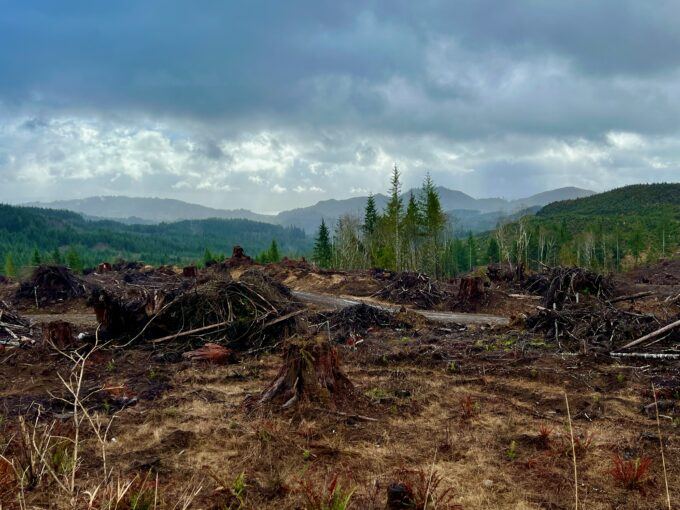The science on climate change is so indisputably well-established, that it’s hard to see how any court would uphold a challenge to it.

A man fills his car up with gas at a Brooklyn station in New York City.
(Photo: Spencer Platt/Getty Images)
Rachel Cleetus
Apr 13, 2025
In a blitz of destructive actions announced by Environmental Protection Agency Administrator Lee Zeldin last month, he specifically called for a reconsideration of the 2009 Endangerment Finding. A formal proposal for reconsideration of the finding (and all the agency regulations and actions that depend on it) is expected this month.
The science underpinning the Endangerment Finding is airtight, but that won’t stop the Trump administration from setting up a rigged process to try to undo it and give a blank check to polluters. The Union of Concerned Scientists (UCS) will fight back to defend climate science and protect public health safeguards.
In an earlier post, I laid out some of the history and context for the 2009 science-backed Endangerment Finding and the Cause or Contribute Finding. These findings followed from the landmark 2007 Mass v. EPA Supreme Court ruling which held that greenhouse gas (GHG) emissions are unambiguously air pollutants covered by the Clean Air Act. Together, these establish the clear basis for EPA’s authority and responsibility to set pollutions limits for heat-trapping emissions from vehicles, power plants, and other sources of these pollutants, under the Clean Air Act.
There is nothing mysterious about the heat-trapping attributes of greenhouse gases, nor their impact on public health. It’s called science.
Attacks on the Endangerment Finding and EPA’s Clean Air Act authority from industry interests are nothing new. Importantly, courts have repeatedly upheld both, including in a resounding 2012 decision from the U.S. Court of Appeals–D.C. Circuit in Citizens for Responsible Regulation v. EPA. But those who have long sought to overturn or weaken regulations to limit heat-trapping emissions now have Administrator Zeldin in their corner. And he has shown himself to be an unbridled purveyor of disinformation and proponent of harmful attacks on bedrock public health protections, as my colleague Julie McNamara highlights.
The details of what will be included in the reconsideration proposal are unclear at this point. But we do know some of the trumped-up lines of attack the Zeldin EPA could advance to try to invalidate these findings because many of these tired arguments are outlined in EPA’s reconsideration announcement.
Here are the facts:
Fact No. 1: The Science Backing the Endangerment Finding Is Beyond Dispute
Every major scientific society endorses the scientific consensus on human-caused climate change driven by GHG emissions. The Fifth National Climate Assessment (NCA5) and the IPCC’s Sixth Assessment Report are two major recent authoritative summaries of peer-reviewed climate science, which show that the science on climate change has only become more dire and compelling since 2009.
The impacts of climate change on human health are also starkly clear and backed by overwhelming evidence. Here’s the main finding from the NCA5 chapter on public health, for instance:
Climate change is harming physical, mental, spiritual, and community health through the increasing frequency and intensity of extreme events, higher incidences of infectious and vector-borne diseases, and declines in food and water security. These impacts worsen social inequities. Emissions reductions, effective adaptation measures, and climate-resilient health systems can protect human health and improve health equity.
As just one example, climate change is contributing to worsening extreme heat, which exerts a punishing toll on people’s health, including that of outdoor workers. Heat is already the leading cause of extreme weather-related deaths in the United States, and studies show that heat-related mortality is on the rise.
Looking around the nation, with communities reeling from extreme heatwaves, intensified hurricanes, catastrophic wildfires, and record flooding, climate impacts are the lived reality of all too many people. To deny that or obfuscate about the underlying causes is not only disingenuous, but actively harmful and outright cruel.
Fact No. 2: The Law Requires an Independent Scientific Determination of Endangerment, Unhindered by Cost Considerations
A Finding of Endangerment under the Clean Air Act is specifically focused on a threshold scientific determination of whether the pollutant under consideration harms public health or welfare. Costs to industry of meeting any subsequent regulations are not relevant per the statute.
The original Endangerment Finding was reached in the context of the vehicle emissions, per section 202(a) of the Clean Air Act, partially excerpted below:
The administrator shall by regulation prescribe (and from time to time revise) in accordance with the provisions of this section, standards applicable to the emission of any air pollutant from any class or classes of new motor vehicles or new motor vehicle engines, which in his judgment cause, or contribute to, air pollution which may reasonably be anticipated to endanger public health or welfare.
In its 2012 decision, the D.C. Circuit was also clear is noting that “By employing the verb ‘shall,’ Congress vested a non-discretionary duty in EPA.” That duty is not circumscribed by cost considerations.
Of course, the impacts of climate change are themselves incredibly costly and those costs are mounting as heat-trapping emissions rise. Unsurprisingly, the social cost of greenhouse gases, a science-based estimate of those costs, is another metric that the Trump EPA is seeking to undermine in yet another blatant attempt to put a thumb on the scale in favor of polluting industries.
Fact No. 3: EPA Used Well-Established Methodologies in Its Assessment of Six GHGs
As noted in the 2009 Endangerment Finding, the EPA defined the pollutant contributing to climate change as “the aggregate group of the well-mixed greenhouse gases” with similar attributes. The attributes include that they are sufficiently long-lived, directly emitted, contribute to climate warming, and are a focus of science and policy.
The EPA used a very well-established scientific methodology to combine emissions of GHGs on the basis of their heat-trapping potential, measured in carbon-dioxide equivalents. In the case of passenger cars, light- and heavy-duty trucks, buses, and motorcycles—the transportation sources EPA considered for the original Endangerment Finding—they emitted four key greenhouse gases: carbon dioxide, methane, nitrous oxide, and hydrofluorocarbons.
False, glib claims in the reconsideration announcement baselessly accuse the 2009 Endangerment Finding of making “creative leaps” and “mysterious” choices. There is nothing mysterious about the heat-trapping attributes of greenhouse gases, nor their impact on public health. It’s called science. Once again, relying on the mountain of evidence in the peer-reviewed scientific literature would make that readily apparent.
Fact No. 4: EPA Has the Responsibility and Authority to Regulate Major Sources of GHGs
The Cause or Contribute Finding—which specifically established that greenhouse gas emissions from new vehicles contribute to the pollution that harms public health—may also come under attack. This finding has been extended to other major sources of GHGs, including power plants and oil and gas operations. However, the Trump administration could attempt to use accounting tricks to avoid regulating emissions—as it has tried before.
In its first term, the administration attempted multiple underhanded maneuvers along these lines, including in the context of methane and volatile organic compound regulations in the oil and gas sector. For these regulations, the administration split up segments of the source category, designated them as separate source categories, used that manipulation to claim inability to regulate certain segments, and asserted that methane emissions from the remaining segments were too small and regulating them would not provide additional benefits, so those too could not be regulated. Separately, in the final days of the administration, EPA released an absurd framework attempting to set thresholds for determining “significance,” trialed in the context of power plants.
This irrational approach could be used to artificially segment components of power plants or the power system, for example, and then claim no regulations are required. This kind of rigged math wouldn’t fool a kindergarten child, but there’s no telling where this administration might go in its desperate attempt to undo or weaken regulations on greenhouse gas emissions.
Zeldin’s Relentless Subversion of EPA’s Mission
Under Administrator Zeldin, EPA’s mission to protect public health and the environment has been completely subverted. His shocking rhetoric lays bare how far he will go to protect polluters at the expense of the public. Here he is, for instance, crowing about going after 31+ EPA regulations and guidance, as well as the enforcement of pollution standards meant to protect all of us:
Today is the greatest day of deregulation our nation has seen. We are driving a dagger straight into the heart of the climate change religion…
EPA even set up an email address for polluters to send an email to get a presidential exemption from complying with regulations on toxic pollution, such as mercury emissions, regulated under the Clean Air Act!
Zeldin is fervently committed to dismantling public health protections and rolling back enforcement of existing laws passed by Congress. Going after the Endangerment Finding is an integral part of this all-out assault because, in the Trump administration’s harmful calculation, revoking the finding is a potential means to rolling back all the regulations that depend on it.
Ironically, some utilities and oil and gas companies have spoken out in favor of keeping the finding intact, as they fear a greater risk of climate damages lawsuits in the absence of EPA authority to regulate greenhouse gases. Of course, this just exposes that they know their products are causing damage. What they seek is the weakest possible exercise of EPA authority so they can continue to reap profits while evading accountability for those harms.
We Can Fight Back With Science
But none of this is a foregone conclusion. The legal and scientific basis for the Endangerment Finding is incredibly strong. The false claims Zeldin and other opponents have trotted out are full of bombast but weak on substance.
The science on climate change is so indisputably well-established, that it’s hard to see how any court would uphold a challenge to it. That’s not to say Zeldin won’t try to find a cabal of fringe “scientists” to try to attack it, but they’re unlikely to succeed on the merits.
Public comments on the proposal to reconsider the Endangerment Finding can help set the record straight on facts. And if the Zeldin EPA ignores them and finalizes a sham finding or revokes the finding with a faulty rationale, that will be challenged in court.
UCS will be closely following the details of EPA’s proposal to reconsider the Endangerment Finding when it is released. And we will let you know how you can add your voice to bolster this crucial science-based finding, and the public health protections that flow from it. So, stay tuned!
© 2023 Union of Concerned Scientists
Rachel Cleetus is the policy director with the Climate and Energy program at the Union of Concerned Scientists.
Full Bio >
